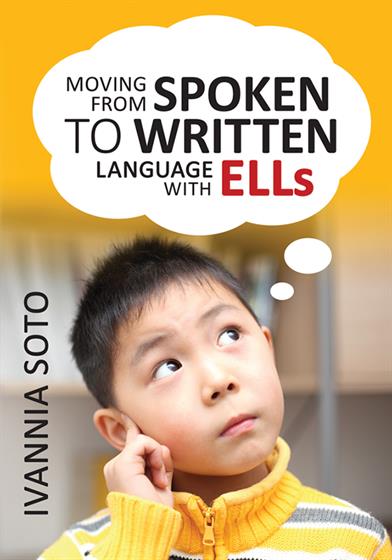Description
Mastering spoken language is the key to writing success for English language learners
English language learners struggle to meet the increased classroom writing demands of the Common Core State Standards, and many schools seem at a loss for solutions.
In these pages, ELL expert Ivannia Soto builds on the groundbreaking research she presented in her previous book ELL Shadowing as a Catalyst for Change to show how oral language development scaffolds writing skills. To implement this knowledge, Soto offers educators a powerful set of tools:
• Exciting spoken techniques such as Socratic Seminar, Frayer model and Think-Pair-Share that build vocabulary and extend into academic writing
• Approaches to teaching three essential styles of writing: argumentative, procedural, and narrative
• Sample lesson plans and graphic organizer templates
ELLs must develop oral language skills before meeting the Common Core’s writing requirements. This book provides the tools to make this happen.
"This timely book collects oral language strategies designed to scaffold academic writing for English language learners at intermediate and advanced levels of English proficiency. Concrete examples support the goal of teaching college and career ready standards across content areas."
—Charlene Rivera, Research Professor
The George Washington University Center for Equity and Excellence in Education
Key features
(1) Guides teachers in strategically using speaking -- specifically, academic oral language production -- to scaffold writing as means to closing achievements gaps between ELLs and their native English peers.
(2) Provides a framework for teaching three specific genres of writing—narrative, informational/explanatory, and argumentative writing—along with a lesson plan guide, sample lessons, and student work samples.
(3) Student work samples are included to enable teachers to hear the voices and analyze the writing of several ELLs across grade levels, as well as see how their writing evolves over a school year.
(4) Offers focused and detailed strategies and frameworks for altering instructional practice around utilizing best scaffolding practices for ELLs from basic to more advanced.
(5) Grounded in solid research foundation and very compatible with Common Core Initiatives.


